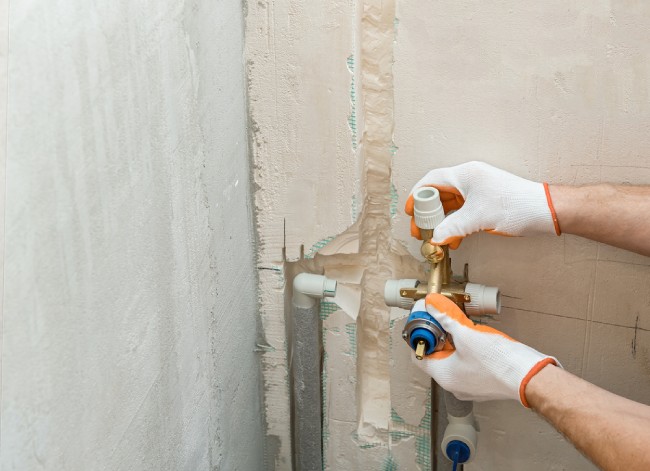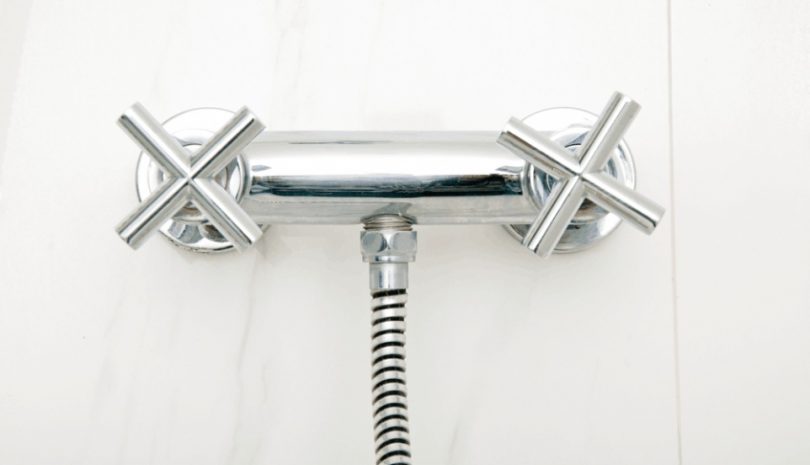Are you planning a repair in your shower or do you want to know more about your shower valve? This article should guide you through the ins and outs of a shower valve, carefully labeling the parts, while also giving you maintenance tips and suggestions.
At the end of this article, you are bound to know how a shower valve works and how you can keep your family secure in the shower.
While also installing a shower valve that everyone is linked to enjoy. It can be frustrating not knowing how things in your new home, work. This means that whenever something goes wrong in the plumbing even for the slightest issue, you have to go through the ignominy of calling the plumber to fix it. Of course, they are expensive.
Not only is it expensive, but it is also time-consuming and stressful. Knowing more about the valves gives you options. It tells you when it is okay to do it yourself or when it is okay to call the plumber, price of parts and the complexity of the various job to determine the cost of doing that specific job.
Whether you plan to fix a leaky head or are looking for the solution for a hot water problem, this post introduces you to the basics. Do you plan to replace the faucet with another one? You can get the information here also.
How Does a Shower Valve Work?

The shower valve does a major function in the house; control and management of water flow and also the temperature of the water pouring down on you. Whether you believe or not, shower valves didn’t use to be a standard part of the shower. People would use public baths or soak in a tub for their basic hygiene.
In America an outstanding 80percent of people have showers. Mostly due to the technological progression in plumbing. Showers do an excellent job in saving water and also are more convenient as they can fit into small spaces as a practical option.
Of course, compared to filling bathtubs, there is so much water and expenses saved. The typical shower doesn’t use more than 30 gallons of water while a bathtub can touch the 50-gallon mark with ease.
People use shower faucets all over the world, so shower faucets can be as diverse and different as the number of nations it is being used. Showers range from outdoor sheds to opulent and advanced structures. In coastal areas, people use outdoor showers to keep the sand out of the house. In Europe, however, a bathroom can be tiled and converted into a bath.
In the U.S the standard showers usually have a stand-alone glass built shower or even the mixture of a tub and shower. Most showerheads are mounted predominantly on the wall.
Have you ever been scalded by the shower valve? If yes. You’d notice this usually happens when somebody flushes the toilet or uses the dishwasher. The shower valve makes your shower safer and more comfortable.
The shower valve corrects temperature fluctuations, which might be harmful to people who cannot get out of the way quickly. The shower valve should come in handy in any shower.
-
Pressure-Balance Valves
The pressure balancing valve is the most convenient and straightforward of the various shower valves that exist. It manages the pressure that comes from hot water or cold water pipes. However, it doesn’t detect the temperature.
There are spring-driven gaskets that are called check stops the water has to pass through before they get to the pressure-balancing valve. These make sure that the water doesn’t invade the other pipes at any time; this has to be consistent when managing the flow of water. These valves can be worked on through accessing screws in the check-stop where the switch to turn off the line you’re working on.
There is a pressure balancing spool at the heart of the valve. A small piston vibrates consistently when hot or cold water passes through it which controls the pressure output.
When cold water drops in the pipes because somebody has been flushing the toilet, this is what makes the hot water reaching you to scald you. The piston vibrates at this point to slow the flow of water, making sure that the temperature stays stable.
Another vital part of the pressure-balancing valve is the shower cartridge. The shower cartridge works when connected to the handle. Pulling the handle to turn the water while also adjusting the temperature, the cartridge moves forward, allowing cold and hot water to mix flowing together through the showerhead
The temperature limit stop is the little piece of metal which is screwed to the cartridge. This makes sure that the valve is fully function al, preventing various forms of scalding.
There is a downside to the pressure-balancing valve. However, they do not detect temperature, so quickly can mishaps show its head
-
Thermostatic valve
The other common type of shower valve is the thermostatic valve, the thermostatic valve, unlike the pressure-balancing valve, detects temperature. There are two handles; one to set the temperature and the other to set the volume water.
This is very function al for people who are looking to conserve energy. It allows you to adjust the flow while shampooing your hair or doing anything that does not require excess flow.
There are wax elements hidden deep in the heart of this valve. This wax reacts to the drop in temperature the hot water in the causes it to expand, stopping it in the right temperature you want, as cold water makes it contract.
This is effective in preventing scalding in your shower because the device is extremely accurate and useful because it gives you the option to the 140 degrees without exposing yourself to the risk of scalding.
-
Single-handle Valves
The single handle provides the easiest way to achieve the wanted temperature by combining the balances of hot and cold water into the central control. These installations are available in so many shapes and styles; single handle valves basically use one of two systems: the pull-out valve and the turn around the valve.
1. The Pull-Out valves
The handles of this faucet variants are attached to a plastic tube by a thin metal rod. On the edge of each the pipe, two rectangular holes are cut, opposing each other into this plastic.
This plastic tube directly fits trough a rubber-lined tube, which also consists of two long and narrow holes at the center. These holes lead directly to hot water or cold water lines.
Pushing the handle removes the space of the tube do not line up with the hole in the pipe, which seals the water off. When you pull out the handle. However, the two holes meet partially, making water move through the tube
Turning the handle left or right creates a different process; the time in which the holes overlap increases on one of the sides while it decreases on the other hand.
This makes sure that the water is flowing through the tubes increases; this then pushes the average temperature in the mixed liquid from warmer to cooler.
2. The Turn-Around Valve
This also uses the tube inside a rubber lined pipe mechanism. Only in this case, the inner pipe has one long rectangular cut hole, and the hot and cold opening in the pipeline is placed on the exact same side.
When you put off the faucet, the opening of the tube is entirely shut-off from the cold water or hot water pipes.
When you turn the handle, you are aligning the tube with the cold water pipes alone, making only cold water flow out of the shower.
When you continue to turn the handle, it moves to the hot water line towards the hot water line, as well as also overlapping with the hot water line. The water then mixes in the tube for a warm shower, turning further allows the shower only letting hot water out because the pipes are overlapping directly with the hot water line.
Two or More Handle Valves
The shower valves with more than one handle work almost the same way the single-handed shower valves work, this time, however, the hot water and cold water controls are more discreet.
There are two handles in this type of shower valve: one handle for hot water and the other for cold water. Some showers have additional handles which should control the pressure of the water coming to the showerhead.
These valves have two pipes, one hot pipe and one cold pipe leading to different sides of the valves, then on each side are the handles which should control the flow of the water.
Through the valves are openings exposed to the water when you turn the handle. This gives you the best control of the temperature of the water since each of the sides is controlled independently
Broken down, above are the ways in which shower valves work. They serve the same purpose as a toilet fill valve– automatically refilling water in the tank. All of the information should give you an informed decision on how your valves work.
If you feel they are malfunction ing or something within the system doesn’t feel right. Do not let the plumber cheat you!








Leave a Comment